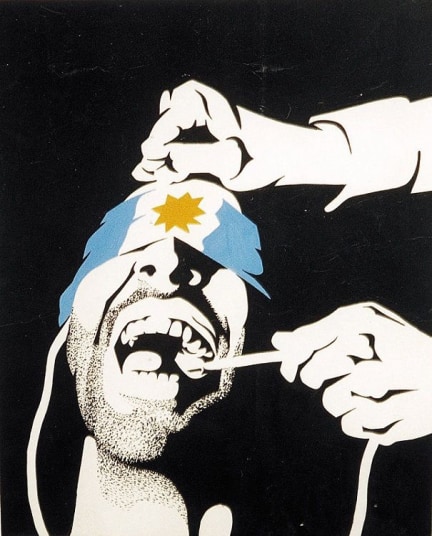Julio Le Parc take part at “Graphic Turn. Like the Ivy on a Wall”, the outcome of a long collective research process conducted by the Southern Conceptualisms Network, in collaboration with the Museo Reina Sofía. The exhibition puts forward a survey of graphic art initiatives which have, from the 1960s to the present day, confronted urgent, politically oppressive contexts in Latin America, articulating strategies of transformation and resistance that radically changed approaches and actions and the way in which they established intersubjective links, built communities, and even circulated graphic supports.
With the aim of exploring how these collective processes granted visibility to different social demands, the exhibition brings together a broad selection of these materials and slogans, quickly and efficiently circulated outside the field of art and from different origins and geographical coordinates, which share precarious components and mediums and the same graphic potential and distribution, activating them as revolutionary wake-up calls. Thus, indigenous rights movements, memory struggles for victims of dictatorships in Chile, Argentina, Peru and Uruguay, and queer activism and feminisms cross over and rise up as the producers of these posters and banners, T-shirts, interventions in urban space, and street performances and actions, comprising a complex set of experiences encompassing ties to solidarity, affinity and influence among the different countries under discussion. Consequently, the exhibition understands notions of graphic art in an expanded sense and the idea of “turn” as an uprising, a challenge to power, reverting that which is a given.
On this occasion, the case studies analysed, inside and outside the Americas, are proof of the wide array of graphic action tools which connect modes of protest and dissidence internationally. Currently under way or recent, these processes look towards other movements from preceding decades from which they have drawn as though they were interconnected episodes. A dialogue that seeks to find not only coincidences and affinities between historical cycles, but also tensions, latencies and transformations in graphic art practices.
Opposite avant-garde graphic art materials associated with the socialisation of art, the present renders an account of the redefinition of graphic art from political practice by dint of strategies of agency that span its insertion in ideological circuits, the creation of counter-hegemonic and decolonial narratives, the transformation of public space, the use of different temporalities — the immediacy of street protests and the protracted time in developing fabric or stitching — as well as its capacity to give rise to communities of collective resistance that cross geopolitical, social and institutional borders.
To learn more about the exhibition click here.
